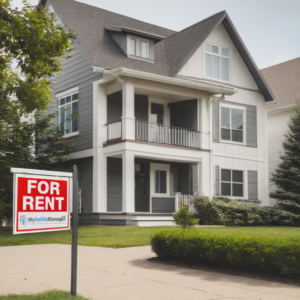For many millennials on Long Island, the transition from renting to homeownership has become increasingly difficult. Rising rental prices, soaring home values, and financial burdens such as student loan debt are making it harder for young adults to establish long-term roots in the communities where they grew up. While some are exploring more affordable alternatives, others find themselves stuck in a cycle of high rent payments that make saving for a down payment nearly impossible.
Rising Rental Costs and the Housing Affordability Crisis
Over the past few years, rental prices on Long Island have seen a sharp increase. In Nassau County, the average rent rose to $2,223 in 2023, up from $1,790 in 2019. In Suffolk County, the trend is similar, with average rents climbing to $2,111 from $1,691 in the same period. These rising costs mean that a significant portion of millennials’ income goes toward rent, leaving little room for savings.
This affordability crisis isn’t just limited to Long Island. Across the country, young adults are struggling with high rental costs, stagnant wages, and increasing living expenses. However, Long Island’s unique real estate market, characterized by limited housing supply and high property taxes, makes the situation particularly challenging for prospective homeowners.
The Homeownership Hurdle: Why Millennials Can’t Afford to Buy
Despite the strong desire to own a home, many millennials find themselves unable to break into the market. Several key factors contribute to this:
-
High Home Prices – The median home price on Long Island has steadily increased, making homeownership less attainable. The price of an average home in Nassau County is over $700,000, while in Suffolk County, it’s around $550,000. These prices are far beyond what many millennials can afford, especially first-time buyers.
-
Student Loan Debt – Many young professionals carry significant student loan debt, making it difficult to save for a down payment. Monthly loan payments, coupled with rent, car expenses, and everyday living costs, make it nearly impossible to set aside money for homeownership.
-
Rising Interest Rates – Higher mortgage rates have made borrowing more expensive. For those who were on the cusp of affording a home, increasing rates have pushed their budgets beyond reach, further delaying their ability to buy.
-
Job Market Challenges – While Long Island offers strong job opportunities in certain industries, wages have not kept pace with the rising cost of living. Many millennials are forced to take on multiple jobs, side gigs, or move in with family to cut costs.
Shifting Strategies: Finding Affordable Alternatives
To combat these challenges, some millennials are exploring alternative paths to homeownership. Several Long Island communities, including Babylon, Islip, Bay Shore, and Wyandanch, have been attracting younger buyers due to their lower home prices and growing downtown areas. These towns offer a mix of affordability and vibrant local culture, making them appealing options for those who can’t afford the high costs of areas like Garden City, Huntington, or Manhasset.
Additionally, some millennials are choosing to relocate to upstate New York or out of state altogether. Cities like Raleigh, Charlotte, and Austin offer lower costs of living, better job markets, and more affordable housing options, prompting an exodus of young professionals from Long Island.
Broader Economic and Social Implications
The trend of prolonged renting among millennials has broader implications for Long Island’s economy and housing market. If young professionals continue to be priced out, the region risks losing a vital segment of its population—future homeowners, local business owners, and community leaders.
To address this growing crisis, policymakers, real estate developers, and community leaders need to focus on solutions such as:
- Expanding access to first-time homebuyer programs and down payment assistance
- Increasing the supply of affordable housing and mixed-use developments
- Revisiting zoning laws to allow for more multi-family housing
- Encouraging employer-sponsored homebuyer assistance programs
Final Thoughts
Millennials on Long Island are facing a difficult housing market, with rising rents and home prices pushing homeownership further out of reach. While some are finding ways to adapt by moving to more affordable areas or renting longer, systemic changes are needed to make homeownership a viable option for the next generation. Without intervention, Long Island risks becoming a place where only the wealthiest can afford to buy, leaving young professionals with no choice but to look elsewhere for their future.
Source: Millennial Long Islanders keep renting as houses stay out of reach

